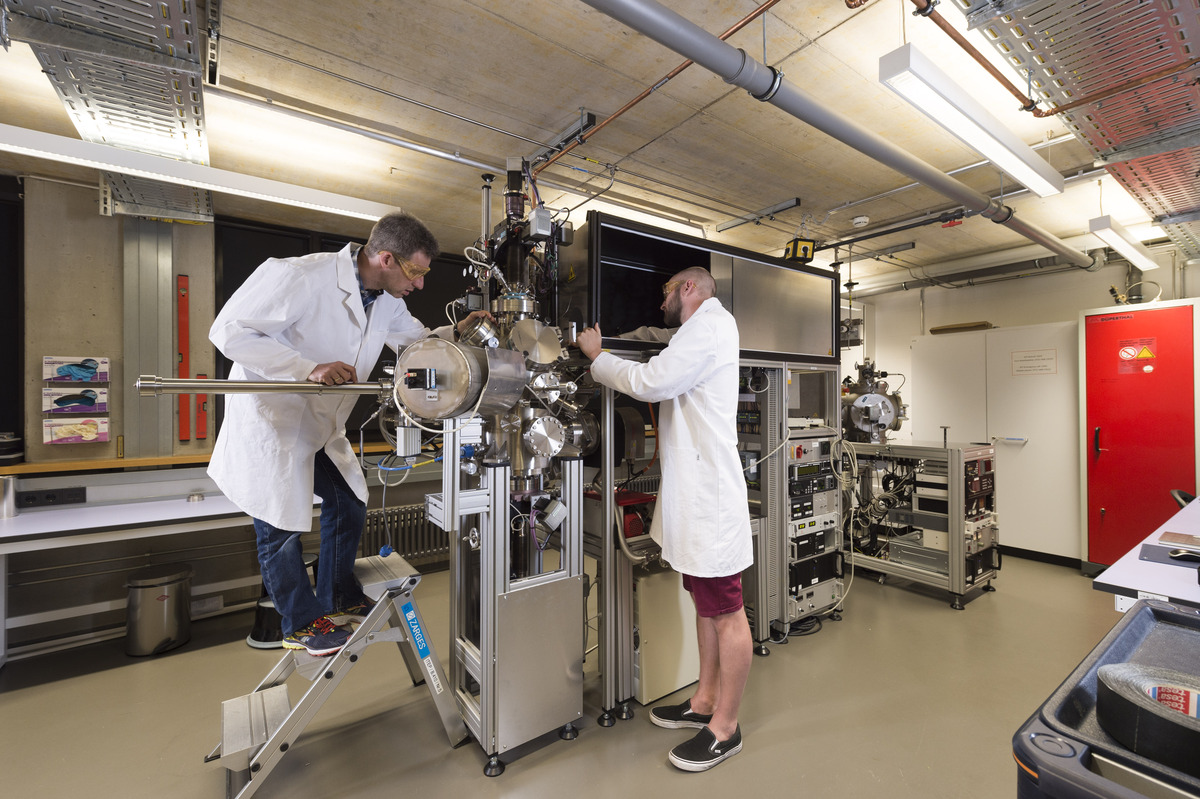Pulsed laser deposition
The pulsed laser deposition (PLD) is a physical method for the deposition of layers from the gas phase and usually takes place in a vacuum. Advantages of PLD are the high flexibility of the starting materials, the stoichiometric transfer of the material and possible deposition conditions far from thermodynamic equilibrium.
In PLD, a high-energy, pulsed (approx. 10-25 ns) and bundled laser beam of suitable wavelength hits a target with the desired or required composition, usually stoichiometric sintered or molten bodies, occasionally also single crystals. The alternating deposition of several single element targets is also possible. The impingement of the laser beam leads to strong local heating and ablation of the target material and finally to the formation of a plasma lobe, which moves almost perpendicular to the target surface towards a heated substrate and causes the layer growth. With suitable selection of the deposition parameters, such as laser energy, energy density on the target, repetition frequency of the laser, background gas and pressure, substrate temperature, and target-substrate distance, which can mutually influence each other, the thin film grows in the desired orientation (usually epitaxially on a single crystalline substrate) and with the desired structural, morphological, stoichiometric and electrical properties.
Equipment
- Ultra high vacuum (UHV) chamber with Nd-YAG laser (λ = 355 nm, 10 Hz, 150 mJ) for the deposition of Fe-based superconductors
- High vacuum chamber with oxygen background gas with Nd-YAG laser (λ = 355 nm, 10 Hz, 150 mJ) for the deposition of cuprate high temperature superconductors
- RHEED system on UHV chamber for high-energy electron reflection diffraction for surface and layer thickness control already during the deposition process
- Motors for targets, substrate heaters and shutters and deposition parameters such as pressure and temperature are controlled and monitored by a LabVIEW program.
- A second PLD laboratory with a KrF excimer laser (λ = 248 nm, 20 Hz, 1 J) is under construction.

